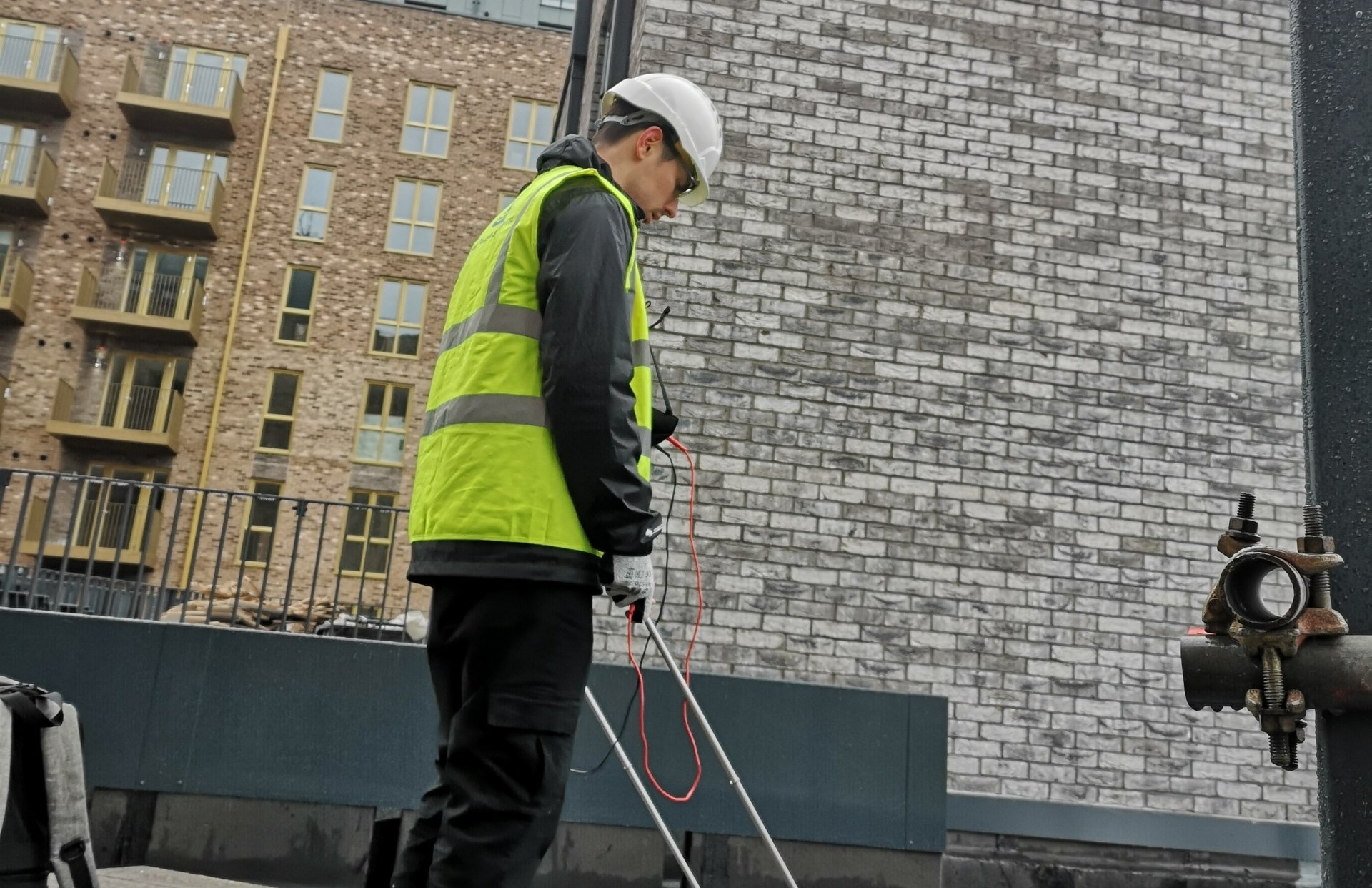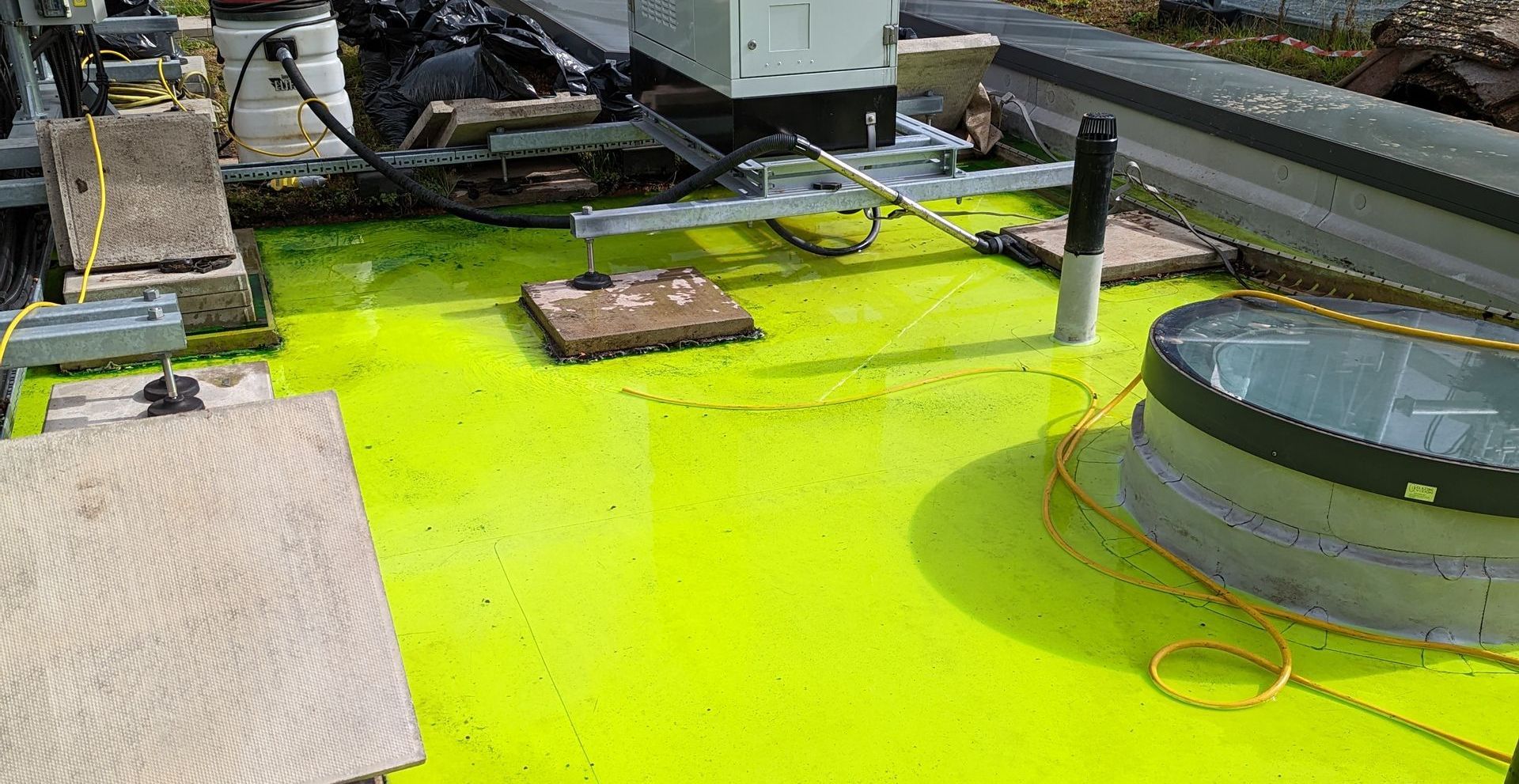Roof Testing
Roof Testing
Electronic Integrity Testing
Electronic Integrity Testing
High Voltage (Dry) Roof Testing
A method of roof leak detection that uses high voltage (safely, due to very low current) to detect points of electrical discharge to earth through the waterproof membrane.
We use a phospor-bronze brush connected to a portable high voltage generator (10-20KV nominal) and sweep across the membrane surface. Breaches are detected by a significant drop in voltage.
Low Voltage (Wet) Roof Testing
A method of roof testing that uses low voltage direct current to create an electric field across the wet surface of the waterproof covering. Any breaches in the membrane alter the electric field and, as current is directional, it can be detected and traced back to source.
We place a loop conductor on the membrane to define the area of test and to exclude extraneous signals from earthed details and structural elements (e.g. smoke vents or plant support rails), which would otherwise distort the results. We then use a meter to detect changes in the field caused by electrical leakage to earth at points of potential water leakage.
Flood Testing
Flood Testing
Flood testing is a simple, yet effective, method of testing whether water ingress is due to the roof waterproofing or not.
The procedure is simple; roof rainwater outlets are temporarily blocked, the roof is then 'flooded' with water to a maximum depth of 50mm at the high point. The use of colour dyes in the water assist in tracing where the water is tracking, ultimately leading to the source.
This testing method is not without risks, as it can potentially cause damage to the building, either due to the weight loading that the test will add to the roof, if there are significant leaks, or if the drainage cannot handle the large volume of water when released.




